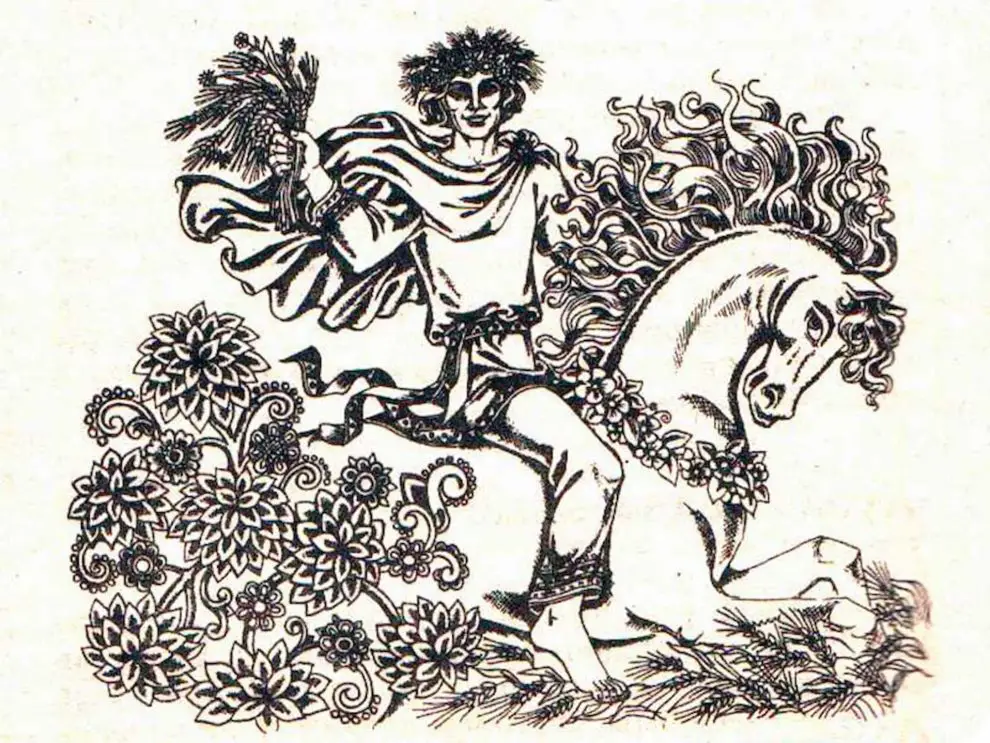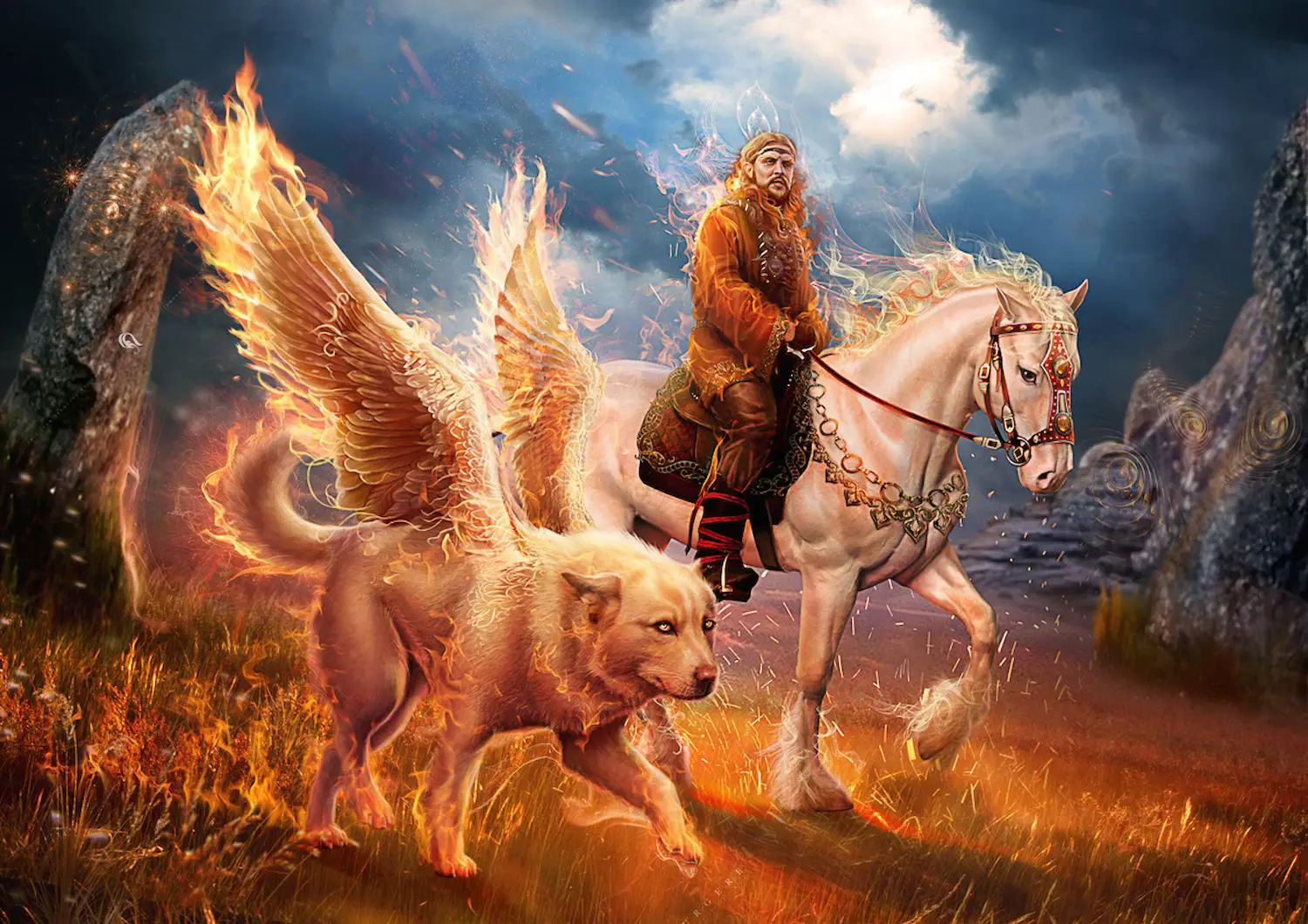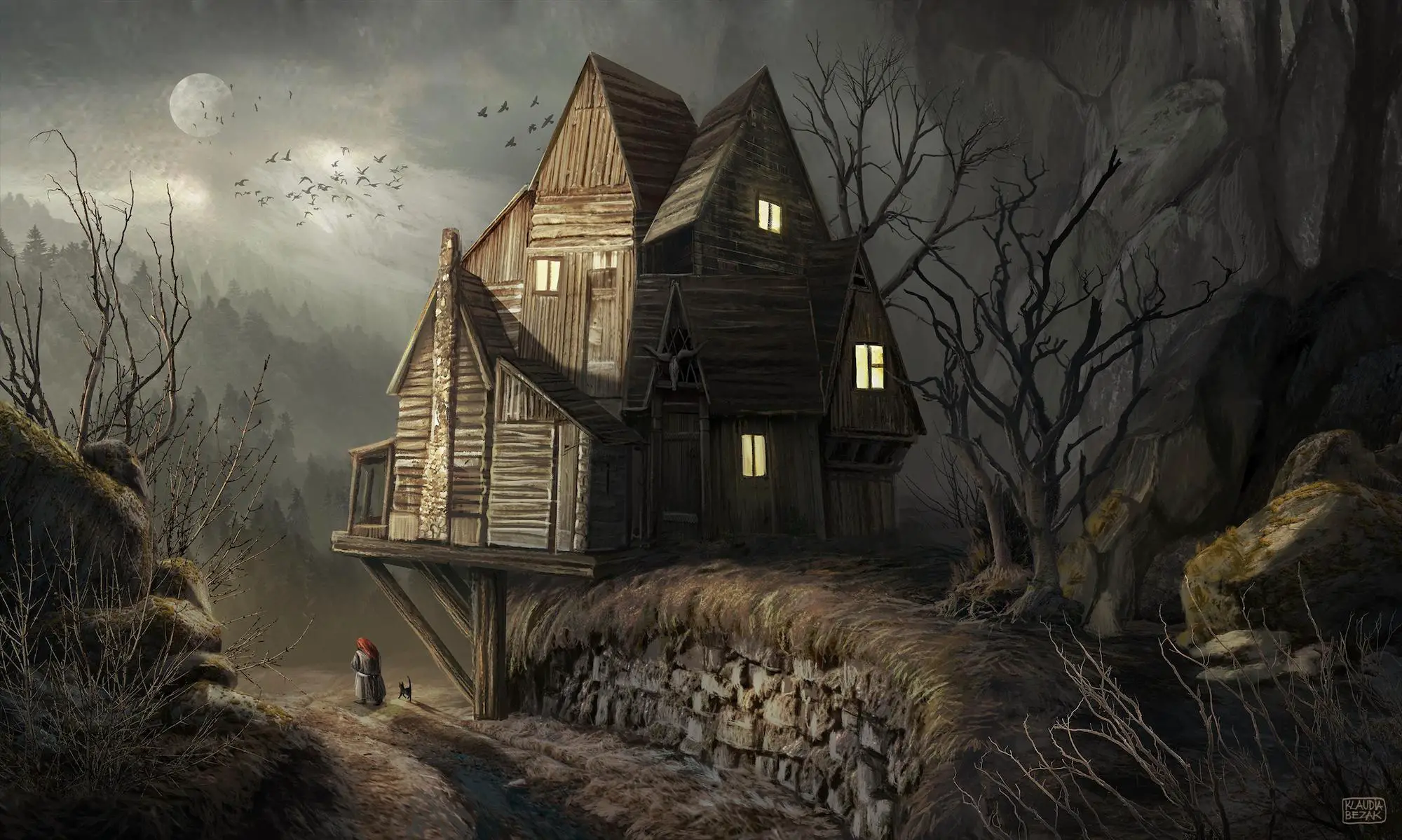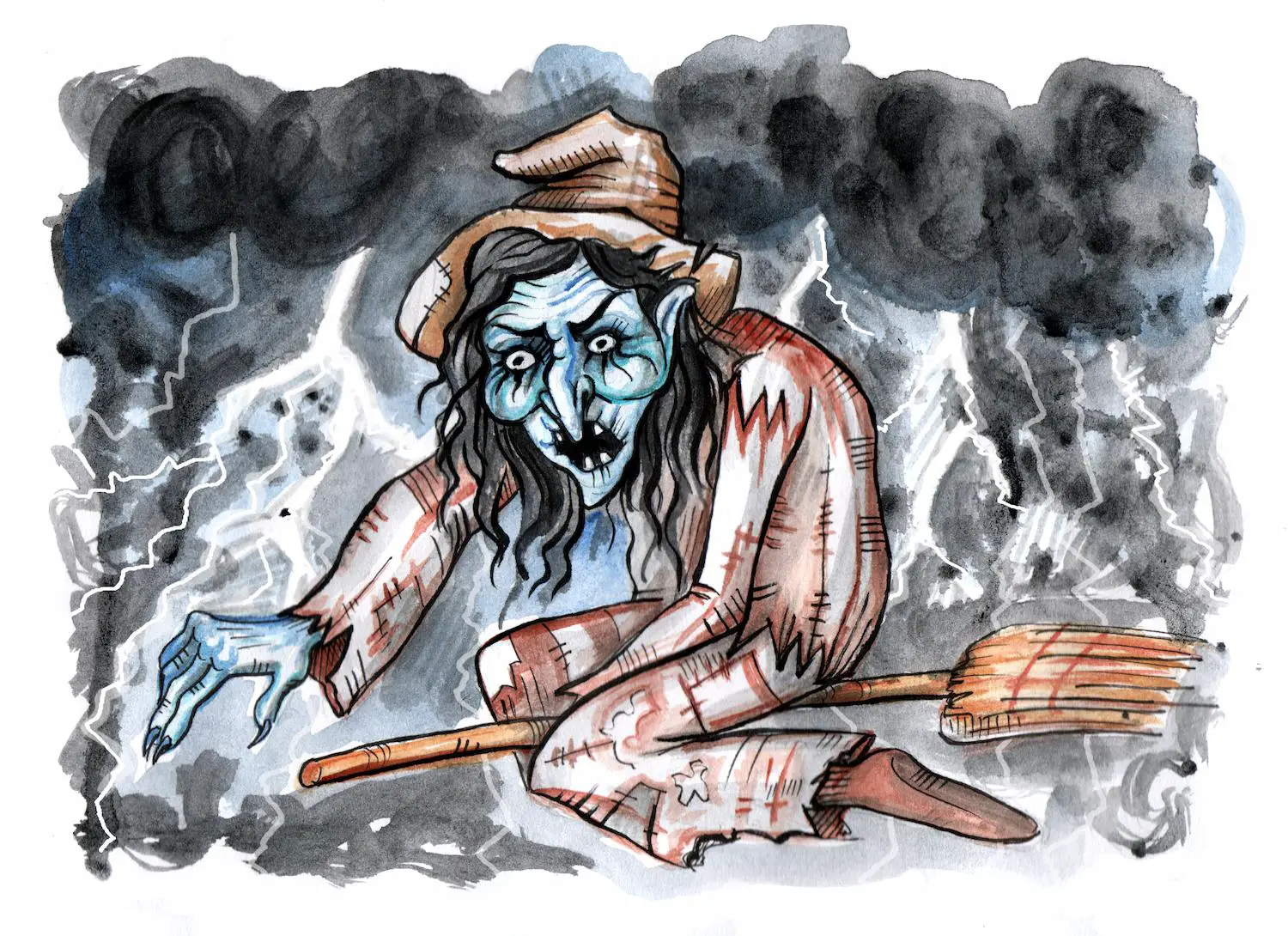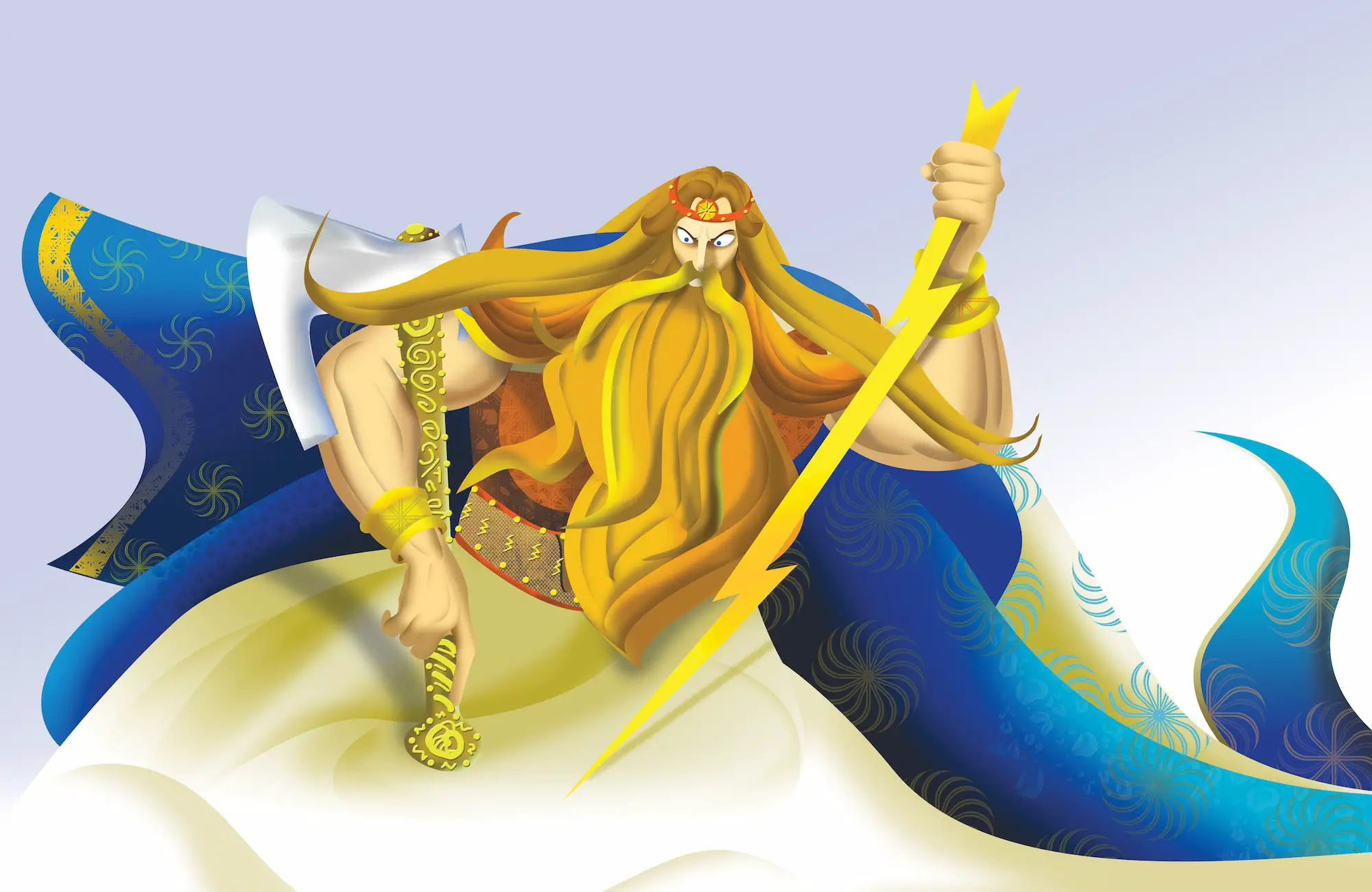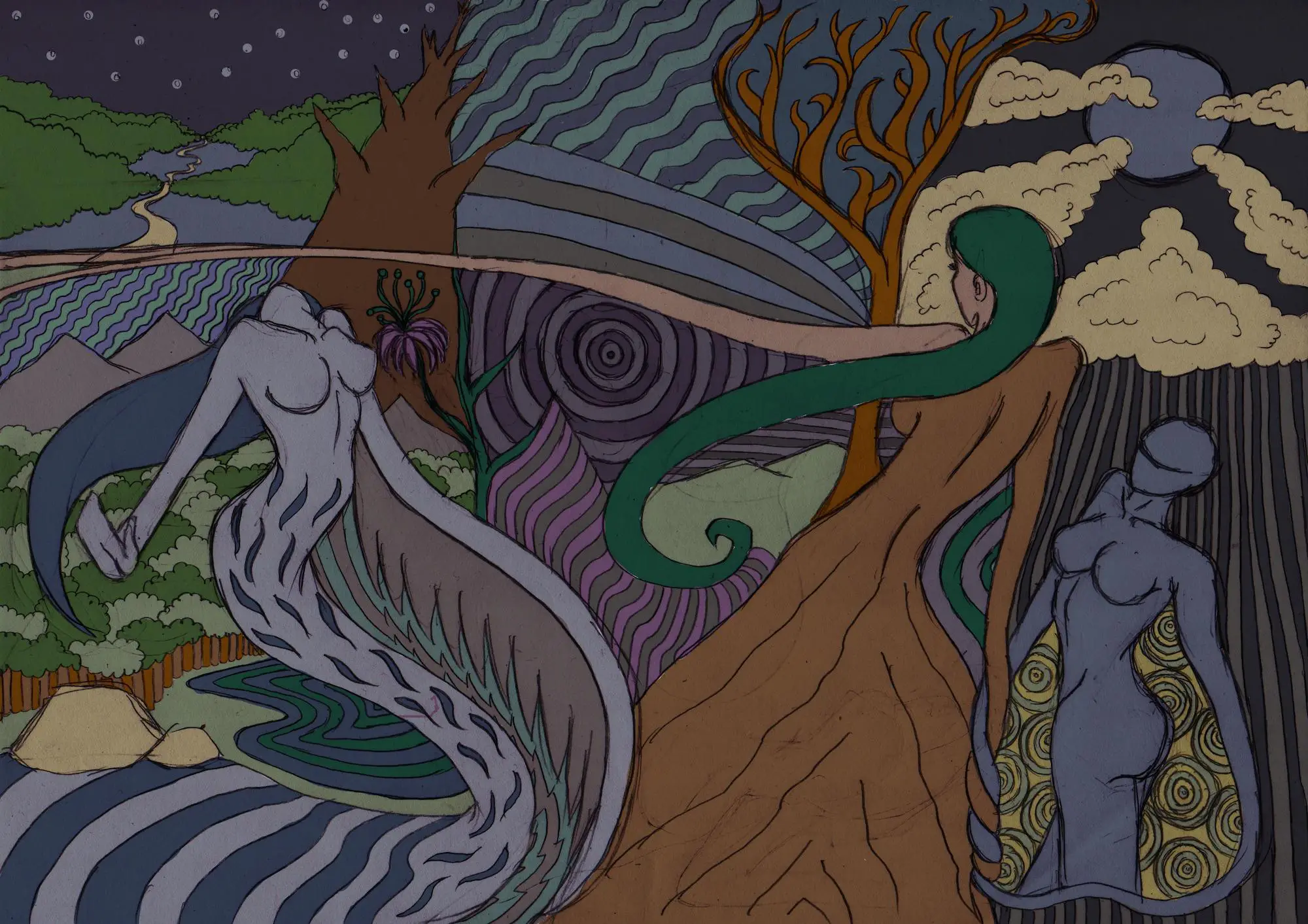The god Jarilo, also known as Jarylo, Yarylo, Iarilo, or Gerovit is a much-honored (and sacred) god from Slavic mythology. He is the god of spring, fertility, and vegetation.
He was most commonly represented with an olive branch in one hand and a sword (or warrior equipment) in the other.
The name of God Jarilo in its base has the word “jar” which in almost all Slavic languages means anger, severity, fire, rage. Even today among the Slavs exist personal names with base “Jar” (e.g. Jaroslav, Jaromír, Jaroslava), as the memory on god Jarilo.
Table of Contents
The Myth of Jarilo
The myth of Jarilo (the god of spring) has been a subject of interest to many historians and folklorists.
The eminent Slavists and scholars Radoslav Katicic and Vitomir Belaj reconstructed the mythological features of Jarilo and concluded that Jarilo (as a deity) represented the circle of life.
His mythical life cycle (birth, death and rebirth each year) corresponded to some wheat plants whose life followed the same path, from the seeding process to the harvest itself.
Jarilo was the son of Perun, the Slavic god of thunder. He was Perun’s tenth son, born on the last night in the month of February (The Great Night).
The so-called Great Night was, in fact, the pagan celebration of the New Year (according to their ancient calendar).
According to the mythological story, Jarilo was stolen from his father on this “Great” night and he was taken to the Underworld.
There, he was raised by Perun’s enemy, the god Veles, the supreme god of the Underworld and cattle, but also trickery.
The Slavic believers considered the Underworld to be an ever-green place where spring is eternal, the grass is always green and the plains are wet and fruitful.
Moreover, the land of the dead souls in the Slavic mythology was portrayed as a place that was located across the sea, visited by the birds who migrated there every winter.
During the wintertime, Jarilo kept his father’s cattle safe, but when the time for spring would come, he returned from the Underworld and brought spring and fertility back to the land of humans.
His return was always celebrated by the people who would organize spring festivals to welcome his arrival.
The scholar Katichich found a phrase in the ancient mythical texts which contained verbs that described the return of Jarilo as “giving birth”. He considered it a key finding that aligned with the symbolism of Jarilo as a god.
In the myth, Jarilo was first noticed and welcomed by the goddess of nature and death, Morana, who was the daughter of the supreme Slavic god Perun (she was Jarilo’s sister).
She and Jarilo were in love and upon his arrival from the Underworld, their love was celebrated with rituals and festivals.
These rituals still live today, as a part of some Slavic wedding celebrations.
The unification of Jarilo and Morana symbolized love, abundance, fertility, lush vegetation and fruitfulness.
This sacred union also meant peace between Heaven and the Underworld, and peace between the Slavic gods Veles and Perun.
Finally, it was expected that the harvest in the late summer would be successful and bountiful for everyone.
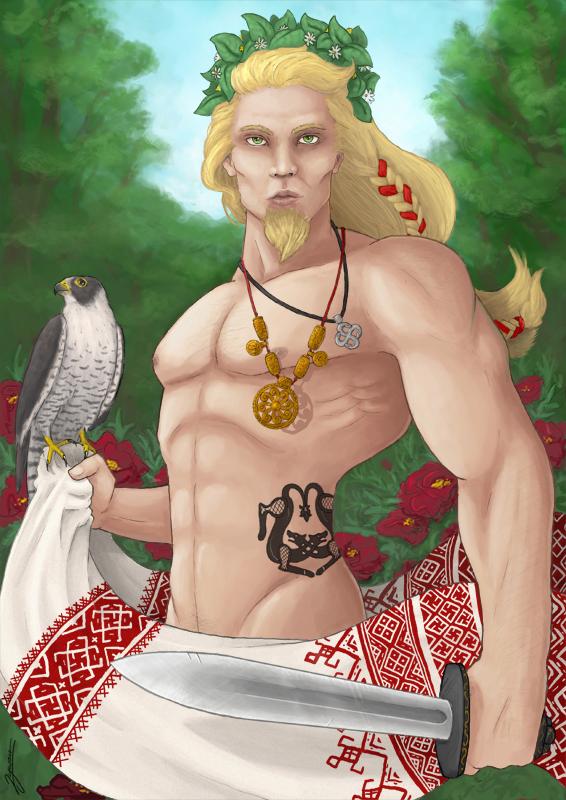
Jarilo and the Myth of Death
Despite the idyllic portrayal of the arrival of Jarilo and the spring festivals organized in his honor, this myth also contains somber elements related to death (as part of the life cycle that Jarilo represents).
After the harvest, which was considered a ritual ending of the life of the crops, Jarilo encountered death.
According to the myth, he was unfaithful to his wife so she killed him (kinda simple, but it works, right?).
His death was considered a symbol of ritual sacrifice since Morana uses Jarilo’s corpse to build a new home for herself (apparently a dead god of spring is better than just using bricks).
The Myth of Rebirth of the Cosmos
Folklorists interpret this part of the myth as a metaphor that refers to the rebirth of the entire cosmos, a concept that is similar to the Scandinavian myth of Ymir, a character presented as a giant whose body is used by the gods to create the world.
Nevertheless, Morana faces an unhappy ending after the death of Jarilo, as she becomes an embittered old woman who turns into the goddess of death and barren winter.
The Funeral of Morana
A celebration known as The Funeral of Morana was also part of this myth. During this ceremony, which was performed in the late winter, a female-shaped scarecrow figure was made and then either burned on a stake or drowned in water.
The discarding of the figure or doll marked the ending of the evil spirit of Morana in the year. It was believed that this way a new path for rejuvenation and growth would be open in the spring.
At this ceremony folk songs about the death of Morana and plea for the new life were also sung [1].
When the new year begins, Jarilo and Morana are born again and the myth starts anew.
Jarilo as the Moon
In some interpretations of this Slavic myth, the infidelity and disloyalty of Jarilo to his wife and his mischievous nature are associated with the changing phases of the Moon.
The identification of Jarilo as a “naughty” pagan deity involves the ability of shapeshifting.
In mythology and folklore, this is the ability of a character to physically transform either through a human superpower or divine, that is, demonic intervention or manipulation.
Shapeshifting and Shamanism
Sometimes, this ability is presented as inherited or as a result of the ability to perform sorcery and spells.
In fact, the concept of shapeshifting is displayed in the oldest forms of totemism and shamanism, including the oldest literature works, the Epic of Gilgamesh and the Iliad [2].
Equine Characteristics of Jarilo
In addition, one of the interpretations of Katichich and Belaj, notes equine characteristics of the god Jarilo, that is, a strong presence of horse features.
In some versions of the myth, he is described as a rider on a horse but also as someone who walks and has sore feet. Also, there is a theory that Jarilo was in fact conceived as a horse.
In the Belarusian folk tradition, on the other hand, he is presented as a girl dressed as a man, mounted on a horse.
Moreover, certain customs that are part of the wedding celebrations in the Baltic and Slavic countries, include the horse as a symbol of a young husband.
Horses in Rituals of West Slavs
Reportedly, the historical records of West Slavic paganism contain references to sacred horses that were kept in temples and were used for divination (to predict the future or outcomes of battles).
A horse would walk through rows of spears and based on the type of its movement, a high-priest would forecast the future of the tribe and its people.
Jarilo as a Beautiful Horse
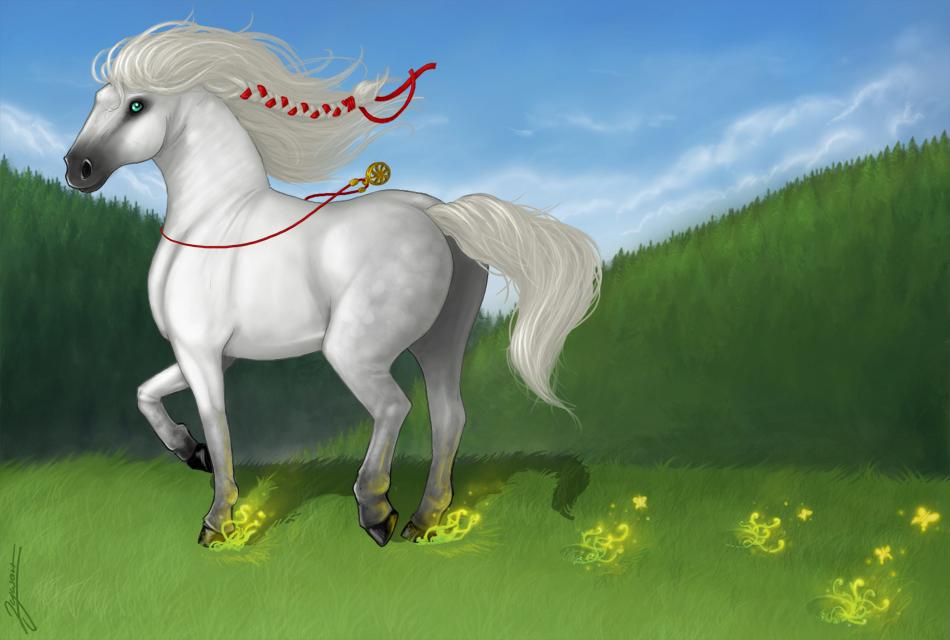
In some of the folk songs in the Slavic tradition, there is a mention of an angry wife who is cheated by her beloved husband so she kills a horse in rage and orders her brothers to kill her husband.
According to one version of this Slavic belief, Jarilo turned into a beautiful white horse who was courageous and strong. The horse traveled from afar and arrived in the living world to bring prosperity and growth to the Slavs.
Historical Overview
According to the available historical and folklore records, Jarilo is first officially mentioned in the biography of the evangelized German bishop Otto of Bamberg (who spent a lot of time with these pagan tribes) [3].
Bamberg noted that in the cities of Wolgast and Havelberg, people organized festivals in honor of the god of the war Gerovit which, presumably, is the German version of the Slavic “Jarovit”.
It should be noted that the information that was revealed several centuries after these findings, shone a light on the folklore and tradition practiced on the territory of Belarus, Serbia and Russia.
Ceremonies and Rituals
The researchers of the Slavic mythology found remnants of pagan ceremonies and rituals.
It is assumed that after Christianization, these festivals (and their deities) were converted into celebrations of St. George or “Juraj” (they are also known as “Zeleni Juraj”).
So, essentially what happened after the Christianization was that the Slavic god Jarilo was transformed into St. George (the main characteristics of both of them are similar).
Jarilo as a Doll
The basic ritual during festivals that celebrated Jarilo as a god of spring, fertility and vegetation included a group of villagers who made a procession of walking around the country, carrying a person masked in Jarilo or a doll.
The person or the doll would be covered or made with straw, branches and green leaves. Some versions of these rituals included a girl dressed as a man, riding a white horse.
The villagers would then gather and sing a traditional song about Jarilo that told the story of his coming back home from across the sea. This referred to the return of spring and the bounty springtime brings- blessings, fertility and fruitfulness.
Jarilo and St.George
As mentioned above, the association of the god of spring Jarilo to St. George (and in some versions St. John) appeared after the conversion of the Slavic tribes to Christianity.
Reportedly, the festivities of the two saints were in the period between the growth of the green grass and leaves and the harvest.
If you are interested to learn more about the gods from the mythology of the Slavs, make sure to check out the following article: Top 9 Gods of the Slavic Pantheon.
References
- https://brendan-noble.com/jarylo-jarilo-yarilo-slavic-god-of-spring-war-fertility-and-agriculture/
- https://www.britannica.com/topic/Epic-of-Gilgamesh
- https://www.encyclopedia.com/religion/encyclopedias-almanacs-transcripts-and-maps/otto-bamberg-st







